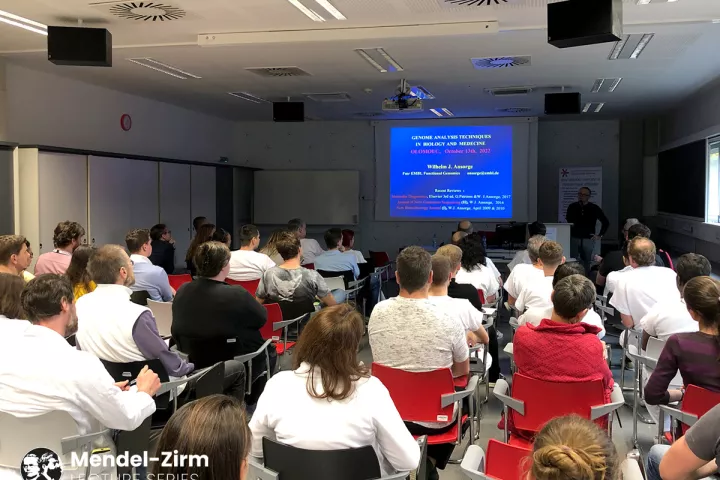
Nanomaterials in medicine
The field of nanomaterials in medicine (often labelled as nanomedicine), covers many types of nanomaterials of various structures or morphologies, and advanced mostly optical or electrochemical techniques optimized to provide early diagnostics and more efficient and frequently personalized therapies for many severe diseases. Nanomaterials enhance the possibilities of medical therapy and diagnostics in many aspects: i) nanomaterials can be used to image specific regions via their fluorescence or plasmonic properties so they can be applied in the analysis of diseases directly inside the human body. II) nanomaterials can be used as efficient active drug delivery systems. In many cases, it is possible to apply the nanomaterials as theranostic agents allowing to monitor the effect of a drug in vivo.
It is commonly recognized that there is no single nanoplatform that can be used in a diagnosis and treatment of more kinds of diseases. Each and every nanoplatform must be precisely tuned to maximise its in vivo effectiveness, while maintaining low toxicity for normal cells and tissues. It is also well known that the biological effects of nanomaterials considerably vary even with superficial changes in its morphology or size. Therefore, many efforts have been given to the development of precision synthesis protocols. Moreover, advanced functionalization methods allow the possibility of incorporating an increasing number of functionalities, which further allow to detect various biological responses, which further allow to target specific cells or sub-cellular compartments, or which can be used in an imaging of drug release.
At our research group, we tackle these scientific challenges with the primary goal to design efficient nanoplatforms and establish new protocols to address severe diseases, including osteosarcoma, breast adenosarcoma or glioblastoma.
Synthesis and functionalization of advanced nanostructured materials for active drug delivery systems, plasmonic or fluorescent based detection of clinically relevant molecular markers and chiral analysis.
Development of drug delivery systems based on i) advanced 2D nanomaterials and ii) biopolymeric nanocarriers.
Development of methods for a detection of clinically relevant molecular markers using optical methods and plasmonic nanostructures.
Analysis of chiral compounds using 2D optical anisotropic nanomaterials.
- Patent: CZ 305989, Granted: 27.4.2016, Ownership: Palacky University Olomouc, Inventors: Kolářová Hana, Bajgar Robert, Tománková Kateřina, Bolek Lukáš, Dejmek Jiří, Bolek Matouš, Růžička Jiří, Beneš Jiří
- Published Application PCT/CZ2014/000153 under WO 2016/078629 (26.5.2016)
- Utility Model: PUV 2014-30305, CZ 27799, Granted: 6.2.2015, Ownership: Palacky University Olomouc, Inventors: Kolářová Hana, Bajgar Robert, Tománková Kateřina, Bolek Lukáš, Dejmek Jiří, Bolek Matouš, Růžička Jiří, Beneš Jiří
Status: Terminated
- Utility Model: CZ 28195, Granted: 13.5.2015, Ownership: Technical University Brno, Palacky University Olomouc, Inventors: Paloušek David, Grepl Robert, Krejčí Petr, Vejlupek Josef, Mistrík Martin.
- Status: Terminated
| Project: | Study of basic pharmacokinetic properties (ADME) of new drugs in preclinical development |
|---|---|
| Supervisors: | Lišková Barbora Ph.D. |
| Available: | 1 |
| Intended for: | Doctoral training |
| Project: | Plasmonic nanomaterials in cancer theranostics |
|---|---|
| Supervisors: | Ranc Václav Ph.D., Petřík Miloš Ph.D. |
| Available: | 2 |
| Intended for: | Doctoral training |
| Project: | Synthesis and characterization of 2D nanoplatforms as active drug carriers |
|---|---|
| Supervisors: | Ranc Václav Ph.D., Hajdúch Marián M.D., Ph.D. |
| Available: | 3 |
| Intended for: | Doctoral training |
| Project: | Modifications of biologically active molecules leading to improvement of their pharmacological properties |
|---|---|
| Supervisors: | Urban Milan Ph.D., Ranc Václav Ph.D., Polishchuk Pavlo Ph.D., M.Sc. |
| Available: | 3 |
| Intended for: | Doctoral training |
| Project: | The role of tumor hypoxia in the development of acquired resistance to microtubule-targeted drugs |
|---|---|
| Supervisors: | Das Viswanath M.Sc., Ph.D. |
| Available: | 1 |
| Intended for: | Doctoral training |
| Summary: | 1 place in full-time study |
| Project: | Development of 3D pharmacophore signatures and their application in the design of anticancer drugs |
|---|---|
| Supervisors: | Polishchuk Pavlo Ph.D., M.Sc. |
| Available: | 1 |
| Intended for: | Doctoral training |
| Summary: | 1 place in the face-to-face form of study |
| Project: | Pharmacokinetic methods in preclinical drug testing |
|---|---|
| Supervisors: | Hajdúch Marián M.D., Ph.D., Lišková Barbora Ph.D. |
| Available: | 1 |
| Intended for: | Doctoral training |
| Summary: | The study of ADME properties of a potential drug that are part of the IMTM chemical library - obtained by national or international cooperation belongs to one of the first steps in predicting potential drugs. In vitro models generate many ADME parameters, including chemical, plasma and microsomal stability, plasma protein binding and proportion of passive diffusion as a transport mechanism. The Caco-2 and MDCK-MDR1 permeability assays are established models of intestinal and blood-brain barriers, respectively. Analysis of samples is performed using a Agilent RapidFire 300 - rapid online solid phase extraction with subsequent detection of the mass spectrometer Qtrap 5500 (AB Sciex) - RF/MS. High-Throughput Mass Spectrometry System RF/MS delivers ultrafast, label – free analysis of native compounds for biochemical assays in ADME and provide throughput speeds of 6 to 10 seconds per sample. |





